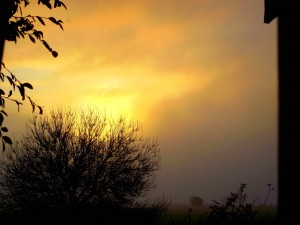 Autumn
Autumn
“The possibilities of summer are gone, and the chill of winter is on the horizon.
Skies turn grey, and many people turn inward, both physically and mentally.”
  Autumn or Fall is one of the four temperate seasons. Autumn marks the transition from summer into winter, in September (Northern Hemisphere) or March (Southern Hemisphere) when the arrival of night becomes noticeably earlier.
 Autumn or Fall is one of the four temperate seasons. Autumn marks the transition from summer into winter, in September (Northern Hemisphere) or March (Southern Hemisphere) when the arrival of night becomes noticeably earlier.
The equinoxes might be expected to be in the middle of their respective seasons, but temperature lag (caused by the thermal latency of the ground and sea) means that seasons appear later than dates calculated from a purely astronomical perspective. The actual lag varies with region. Some cultures regard the autumnal equinox as “mid-autumn”, others with a longer lag treat it as the start of autumn. Meteorologists (and most of the temperate countries in the southern hemisphere) use a definition based on months, with autumn being September, October and November in the northern hemisphere, and March, April and May in the southern hemisphere.
In North America, autumn is usually considered to start with the September equinox. In traditional East Asian solar term, autumn starts on or around 8 August and ends on about 7 November. In Ireland, the autumn months according to the national meteorological service, Met √Čireann, are September, October and November. However, according to the Irish Calendar which is based on ancient Gaelic traditions, autumn lasts throughout the months of August, September, and October, or possibly a few days later, depending on tradition. In Australia, autumn officially begins on 1 March and ends 31 May According to United States tradition, autumn runs from the day after Labor Day (i.e. the Tuesday following the first Monday of September) through Thanksgiving (i.e. the fourth Thursday in November), after which the holiday season that demarcates the unofficial beginning of winter begins.
The word autumn comes from the Old French word autompne (automne in modern French), and was later normalised to the original Latin word autumnus. There are rare examples of its use as early as the 12th century, but it became common by the 16th century.
Before the 16th century, harvest was the term usually used to refer to the season, as it is common in other West Germanic languages to this day (cf. Dutch herfst and German Herbst). However, as more people gradually moved from working the land to living in towns (especially those who could read and write, the only people whose use of language we now know), the word harvest lost its reference to the time of year and came to refer only to the actual activity of reaping, and autumn, as well as fall, began to replace it as a reference to the season. 
The alternative word fall for the season traces its origins to old Germanic languages. The exact derivation is unclear, with the Old English fi√¶ll or feallan and the Old Norse fall all being possible candidates. However, these words all have the meaning “to fall from a height” and are clearly derived either from a common root or from each other. The term came to denote the season in 16th century England, a contraction of Middle English expressions like “fall of the leaf” and “fall of the year”.
During the 17th century, English emigration to the British colonies in North America was at its peak, and the new settlers took the English language with them. While the term fall gradually became obsolete in Britain, it became the more common term in North America.
Association with the transition from warm to cold weather, and its related status as the season of the primary harvest, has dominated its themes and popular images. In Western cultures, personifications of autumn are usually pretty, well-fed females adorned with fruits, vegetables and grains that ripen at this time. Many cultures feature autumnal harvest festivals, often the most important on their calendars. Still extant echoes of these celebrations are found in the mid-autumn Thanksgiving holiday of the United States and Canada, and the Jewish Sukkot holiday with its roots as a full-moon harvest festival of “tabernacles” (living in outdoor huts around the time of harvest). There are also the many North American Indian festivals tied to harvest of autumnally ripe foods gathered in the wild, the Chinese Mid-Autumn or Moon festival, and many others. The predominant mood of these autumnal celebrations is a gladness for the fruits of the earth mixed with a certain melancholy linked to the imminent arrival of harsh weather.
This view is presented in English poet John Keats‘ poem To Autumn, where he describes the season as a time of bounteous fecundity, a time of ‘mellow fruitfulness’.
 While most foods are harvested during the autumn, foods particularly associated with the season include pumpkins (which are integral parts of both Thanksgiving and Halloween) and apples, which are used to make the seasonal beverage apple cider.
While most foods are harvested during the autumn, foods particularly associated with the season include pumpkins (which are integral parts of both Thanksgiving and Halloween) and apples, which are used to make the seasonal beverage apple cider.




